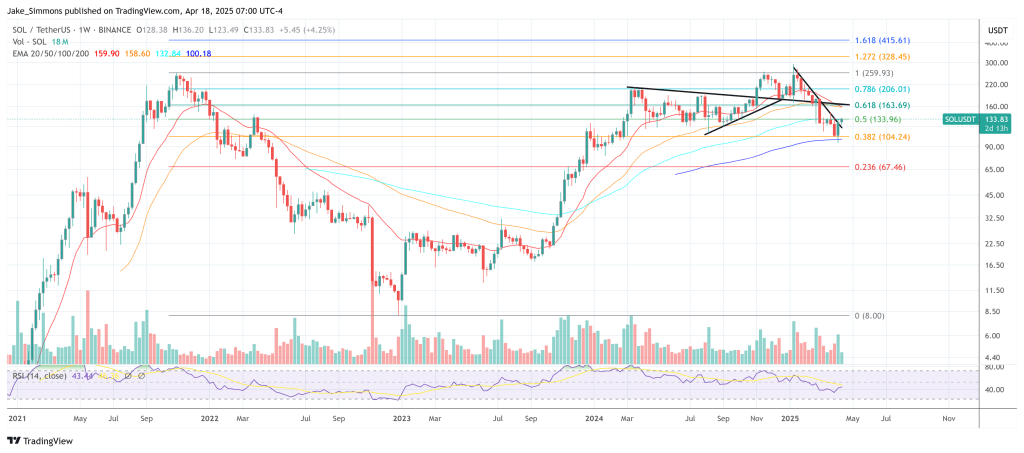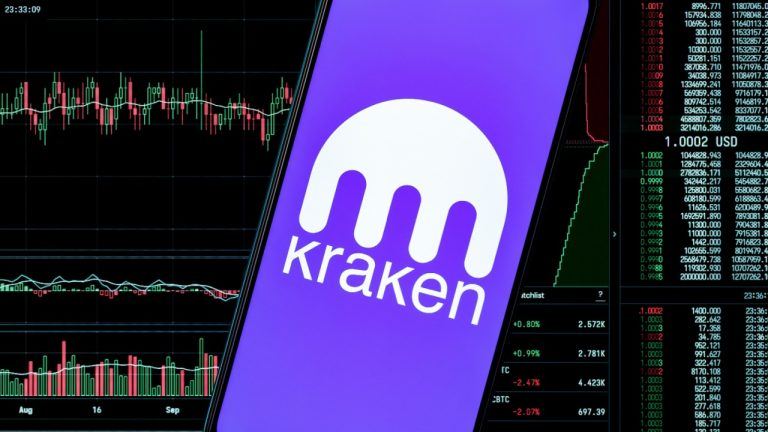
A recent meetup on the Capitol Hill highlighted several key debates that will define the mining industry’s development in the years to come.
On Jan. 27, a group of eight U.S. lawmakers, led by Senator Elizabeth Warren, sent letters to the world’s six largest Bitcoin mining companies, demanding to reveal the detailed data on their electricity consumption. This isn’t the first time Senator Warren requested this information from a mining operation — last month a similar letter was sent to Greenidge Generation, which uses a natural gas plant to power its facility.
These moves highlight the increasing regulatory pressure on crypto mining businesses in the United States. But, as last week’s Congress hearing showed, the growing scrutiny might turn out to be an opportunity to align the mining sector’s development with the broader political push for clean energy. Here are some of the key themes around crypto mining that have captured the lawmakers’ attention and that will likely inform the intensifying policy conversation.
Total energy consumption
A cornerstone of any environmental critique of Bitcoin and crypto in general, the question of how much energy cryptocurrency mining consumes was expectedly prominent at the hearing. In a 2018 paper published in the prestigious journal Nature, a group of researchers predicted that Bitcoin’s growth could singlehandedly push global emissions above 2 degrees Celsius within less than three decades — not a good look given the international community’s stated mission to prevent the planet’s temperature rise of the exactly same magnitude.
Cambridge University Bitcoin Electricity Consumption Index set the tone of comparing the yearly Bitcoin-driven consumption to various nation’s levels — and as for now, with its 131.1 TWh per year the most popular cryptocurrency consumes more energy than Ukraine (124.5 TWh) or Norway (124.3), according to this source. The current estimate of Ethereum’s annualized energy footprint by Digiconimist stands at around 73.19 TWh.
None of the most widely cited estimates is beyond dispute, as the recent fact-check report by Bitcoin Policy Institute (BPI) suggests. It cited three separate articles from the peer-reviewed Nature Climate Change journal, one of them debunking the 2 degrees argument as “fundamentally flawed” and criticizing its methodology.
Crypto proponents prefer to compare Bitcoin energy consumption not to nations, but to other industries — in that case, according to the BPI report, BTC’s 0.27% of global energy consumption is less than that of gold mining, although the Cambridge Index sets the two equal.
Fossils vs renewables
In the context of the ever-growing political pressure on energy consumption, the search for a sustainable energy framework becomes crucial for any industry that wants to flourish in the digital age.
The critics of the crypto mining industry have recently highlighted several instances of mining operations relaunching the existing fossil power plants. The authors of the letter that some 70 NGOs sent to Congress ahead of the crypto mining hearing called the legislators’ attention to several such instances, like the relaunch of coal waste plants in Pennsylvania by Stronghold Digital Mining and the partnership between Marathon Digital and coal-fired plants in Montana.
There is also evidence that these are not the only American companies buying up the old ‘“dirty energy” plants to feed their mining operations — the pattern is observed from Texas to Missouri. At the Congress hearing, it was Steve Wright, a former general manager of Chelan County’s in Washington public utility district, who talked at length about the problem. He explained that miners’ interst in dormant fossil facilities is driven by a simple market mechanism: As renewable energy prices (on the West Coast specifically) grow in line with increasing demand, coal prices drop due to investors’ flight ahead of the upcoming 2025 ban on any coal usage in Washington state.
As Represenatives kept returning to this issue over the course of the hearing, it became clear that the tension between the use of fossil fuels for crypto mining and the industry’s potential shift to renewable energy sources is at the center of policymakers’ thinking on the issue. Witness John Belizaire, CEO of green data centers developer Soluna Computing, argued that there exist scenarios under which crypto mining can shift from a being “dirty” energy concern to a vehicle complementing and empowering the renewable energy sector.
Belizaire’s core argument is that computation-intensive tasks like Bitcoin (BTC) mining can be powered by the recaptured excessive (or, in the industry terms, “curtailed”) energy otherwise wasted by clean power plants. According to him, solar and wind farms waste up to 30% of generated energy due to incompatibilities with the old energy grids. Belizaire also addressed the problem of energy shortages allegedly driven by crypto miners, highlighting the fact that the kind of computations that miners execute can be stopped at any moment on-demand.
For now, the problem of “dirty mining” is here to stay simply due to the U.S. level of electricity production from renewable sources being below 7.5%. A recent study by DEKIS Research group at the University of Avila ranks the United States as the 25th country in the world in terms of its sustainable mining potential, with Denmark (65% of energy generated from renewables) and Germany (26%) leading the chart.
Nevertheless, America remains a safe zone for mining, while many other nations' electrical grids are less suited to handle additional load. With a reasonable regulatory framework in place, this could be a massive competitive advantage, laying the groundwork for the U.S. to become a global mining haven. Speaking to Cointelegraph, Belizaire explained that there are certain policy steps that can nudge crypto miners to “go green.” He listed a number of specific measures: “Extended tax credits and special investment tax credits for miners that use green energy and serve as flexible load, along with DOE loan guarantee that is extended to encourage the development of green crypto mining.”
PoW vs. PoS
Any discussion of a possible alliance between crypto mining and green energy tends to bump into a Proof of Work (PoW) versus Proof of Stake (PoS) debate, and the recent hearing was not an exception. It was Cornell professor Ari Juels who repeatedly stated that “Bitcoin does not equal blockchain,” in the sense that the energy-intensive PoW consensus mechanism is not the only way to enjoy the decentralization advantages of crypto.
And, of course, the number one alternative on the table is PoS consensus mechanism that will possibly be adopted by the Ethereum ecosystem and is currently used in a large number of new blockchain projects. It is also central to the development of smart contract-based technologies such as decentralized finance (DeFi) and non-fungible tokens (NFTs).
Juels’ statements reflect the general pressure that is building up on PoW. Earlier this month, Erik Thedéen, vice chair of the European Securities and Markets Authority (ESMA), proposed an outright ban on PoW mining in the EU and called for transitioning to PoS due to its lower energy profile.
In the U.S., dominating the global Bitcoin mining market with the 35% share, the issue is way more pressing than in Thedeen's native Sweden, where only about 1.16% of BTC is mined. However, the real problem lies in the Asia-Pacific region, where, according to the The Global Cryptoasset Benchmarking Study, almost 50% of electricity to Proof-of-Work miners comes from coal.
None of the three experts who spoke with Cointelegraph on the matter see the the juxtaposition of the two consensus protocols as productive. John Warren, CEO of crypto mining firm GEM Mining, noted that there are “slim to none” chances of Bitcoin transitioning to PoS. With that fact in mind, and given Bitcoin's status as the biggest cryptocurrency, ‘the industry should focus its attention on increased adoption of carbon-neutral energy sources versus trying to alter the Bitcoin verification process.”
John Belizaire rejected the idea that the government should support any of the bulletins over another:
Congress does not have enough knowledge to make a call on the technical architecture of a global platform that powers billions of dollars in assets [...] The technology community should be the final arbiter of innovation [...] The POW camp will innovate to solve its problems itself.
Mason Jappa, co-founder and CEO of mining company Blockware Solutions, remarked that both Proofs have their comparative advantages, but, in echoing Belzaire’s testimony, underscored the compatibility potential PoW networks possess towards renewable energy. In that sense, Jappa sees PoW mining as a "net positive for society":
Mining is a perfect complement to the energy grid and is repurposing infrastructure that was otherwise not being utilized, along with providing a use case for building out our energy grid.
What’s next?
As Jappa noted, "It is bullish for the ecosystem that this hearing took place", as once again the lawmakers expressed their understanding that cryptocurrencies are here to stay.
Warren specifically appreciated the part of the discussion that “underscored the ability for the mining industry to innovate more eco-friendly solutions.” We still witnessed plenty of 101 explanations of blockchain technology that reminded of the long way lawmakers should go in terms of their understanding of crypto economy, but, as Warren poined out:
It's important to acknowledge that there were a number of positive remarks that stemmed from the discussion, showcasing to the nation that mining has created many new jobs and that Bitcoin introduced valuable blockchain technology to the world. That perspective has been largely missing from some of the recent public discourse around crypto mining.
Besides the obvious need for both the general public and legislators to get better educated on the issue, there are some clear focal points around which the digital mining industry could rally, Belizaire believes.
For example, laws or governmental programs that encourage the use of renewable energy over legacy fossil fuels to power the industry, like “Incentives for job-creating in rural parts of the country where mining operations are set up – at both the state and federal level.”
Thus, it appears that the green mining card is the one that can present a straightforward economic and environmental argument in favor of the crypto industry, while the PoW/PoS debate is something that should be reserved for the crypto community rather than regulators.

You can get bonuses upto $100 FREE BONUS when you:
💰 Install these recommended apps:
💲 SocialGood - 100% Crypto Back on Everyday Shopping
💲 xPortal - The DeFi For The Next Billion
💲 CryptoTab Browser - Lightweight, fast, and ready to mine!
💰 Register on these recommended exchanges:
🟡 Binance🟡 Bitfinex🟡 Bitmart🟡 Bittrex🟡 Bitget
🟡 CoinEx🟡 Crypto.com🟡 Gate.io🟡 Huobi🟡 Kucoin.




















Comments